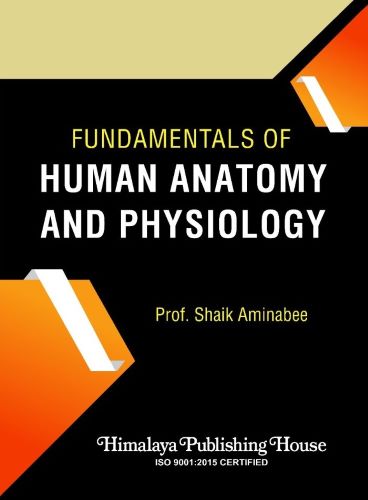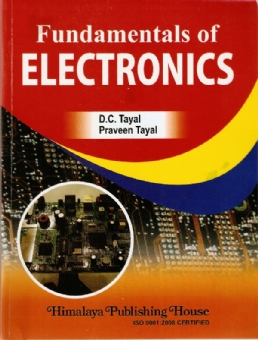The study of Human Anatomy and Physiology forms the cornerstone of health sciences, providing essential knowledge about how the body is structured and how it functions. Fundamentals of Human Anatomy and Physiology is designed to present these concepts in a clear, concise, and student-friendly manner, making it an ideal resource for learners in medicine, pharmacy, nursing, and allied health fields.
This book covers key topics, including the nervous, digestive, respiratory, urinary, endocrine, and reproductive systems, as well as genetics and energetics. Each chapter offers a detailed understanding of anatomical structures along with their physiological roles, emphasising the interconnections between systems that maintain homoeostasis. In addition to theoretical content, the book also links fundamental concepts with practical applications to help students understand their clinical relevance.
I have included tables and figures throughout the book to enhance comprehension and support visual learning. End-of-chapter self assessment questions are provided to reinforce learning and encourage critical thinking.
Contents –
1. Introduction to Human Body
1.1 Definition of Anatomy and Physiology
1.2 Scope of Anatomy and Physiology
1.3 Levels of Structural Organisation and Body Systems
1.4 Basic Life Processes
1.5 Homoeostasis
1.6 Basic Anatomical Terminology
2. Cellular Level of Organisation
2.1 Structure and Functions of Cell
2.2 Transport Across Cell Membrane
2.3 Cell Division
2.4 Cell Junctions
2.5 General Principles of Cell Communication
2.6 Intracellular Signalling Pathway Activation by Extracellular Signal Molecule
2.7 Forms of Intracellular Signaling
3. Tissue Level of Organisation
3.1 Classification of Tissues
3.2 Epithelial Tissue
3.3 Connective Tissue
3.4 Muscular Tissue
3.5 Nervous Tissue
4. Skeletal System
4.1 Divisions of Skeletal System
4.2 Types of Bones
4.3 Axial and Appendicular Skeletal System
4.4 Organisation of Skeletal Muscle
4.5 Physiology of Muscle Contraction
4.6 Neuromuscular Junction
5. Joints
5.1 Classification of Joints
5.2 Types of Joints Movements and its Articulation
6. Body Fluids and Blood
6.1 Body Fluids
6.2 Composition and Functions of Blood
6.3 Haemopoeisis
6.4 Formation of Haemoglobin
6.5 Anemia
6.6 Mechanisms of Coagulation
6.7 Blood Grouping
6.8 Rh Factors
6.9 Transfusion and its Significance
6.10 Disorders of Blood
6.11 Reticuloendothelial System
7. Lymphatic System
7.1 Lymphatic Organs and Tissues
7.2 Lymphatic Vessels
7.3 Lymphatic Circulation and Functions
8. Nervous System
8.1 Organisation of Nervous System
8.2 Neuron
8.3 Neuroglia
8.4 Classification and Properties of Nerve Fibre
8.5 Electrophysiology
8.6 Action Potential
8.7 Nerve Impulse
8.8 Receptors
8.9 Synapse
8.10 Neurotransmitters
9. Central Nervous System
9.1 Meninges
9.2 Ventricles of Brain
9.3 Cerebrospinal Fluid
9.4 Structure and Functions of Brain
9.5 Structure and Functions of Spinal Cord
9.6 Afferent and Efferent Nerve Tracts
9.7 Reflex Activity
10. Peripheral Nervous System
10.1 Classification of Peripheral Nervous System
10.2 Structure and Functions of Sympathetic Nervous System
10.3 Structure and Functions of Parasympathetic Nervous System
10.4 Differences between Sympathetic and Para Sympathetic Nervous System
10.5 Origin and Functions of Spinal and Cranial Nerves
10.6 Differences between Spinal and Cranial Nerves
11. Cardiovascular System
11.1 Anatomy of Heart
11.2 Blood Circulation
11.3 Blood Vessels
11.4 Conduction System of Heart and Heart Beat
11.5 Regulation by Autonomic Nervous System
11.6 Cardiac Output
11.7 Cardiac Cycle
11.8 Regulation of Blood Pressure
11.9 Pulse
11.10 Electrocardiogram
11.11 Disorders of Heart
12. Respiratory System
12.1 Anatomy of Respiratory System
12.2 Mechanism of Respiration
12.3 Regulation of Respiration
12.4 Lung Volumes and Capacities
12.5 Transport of Respiratory Gases
12.6 Artificial Respiration
12.7 Resuscitation Methods
13. Digestive System
13.1 Anatomy of GI Tract
13.2 Salivary Glands
13.3 Pancreas
13.4 Liver
13.5 Movements of GIT
13.6 Digestion and Absorption of Nutrients
13.7 Disorders of GIT
13.8 Formation and Role of ATP
13.9 Creatine Phosphate and BMR
14. Urinary System
14.1 Anatomy and Physiology of Urinary Tract
14.2 Nephron
14.3 Physiology of Urine Formation
14.4 Micturition Reflex
14.5 Kidneys in Acid-Base Balance
14.6 RAAS in Kidney
14.7 Disorders of Kidney
15. Endocrine System
15.1 Classification of Hormones
15.2 Mechanism of Hormone Action
15.3 Pituitary Gland
15.4 Thyroid Gland
15.5 Parathyroid Gland
15.6 Adrenal Gland
15.7 Pancreas
15.8 Pineal Gland
15.9 Thymus Gland
16. Reproductive System
16.1 Male Reproductive System
16.2 Female Reproductive System
16.3 Sex Hormones
16.4 Physiology of Menstruation
16.5 Fertilization
16.6 Spermatogenesis
16.7 Oogenesis
16.8 Pregnancy and Parturition
17. Special Senses
17.1 Structure, Functions and Disorders of Eye
17.2 Structure, Functions and Disorders of Ear
17.3 Structure, Functions and Disorders of Nose
17.4 Structure, Functions and Disorders of Tongue
17.5 Structure, Functions and Disorders of Skin
18. Introduction to Genetics
18.1 Chromosomes
18.2 Genes and DNA
18.3 Protein Synthesis
18.4 Genetic Pattern of Inheritance






